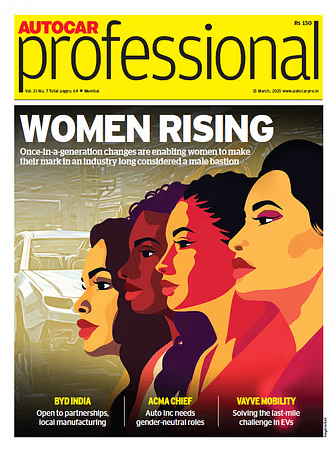“India Would Be the Last Country Standing When It Comes to ICE”: Stellantis India MD Shailesh Hazela
India's strategic position in global automotive manufacturing may see it become the final producer of internal combustion engines as other markets transition to electric vehicles.
As the global auto industry accelerates its shift to cleaner propulsion systems, India is carving out a distinct path—one where internal combustion engines (ICEs) will continue to play a long-term role.
Speaking at the Future of Powertrains Conclave in Chennai, organised by Autocar Professional in partnership with Guidance Tamil Nadu, Shailesh Hazela, CEO & Managing Director of Stellantis India, offered a candid assessment of what the future could hold for India and the broader Global South.
“India would be the last country standing when it comes to ICE,” Hazela said. “And we will be the last producer—including Tamil Nadu. It should be the last one to produce the last ICE in India.”
This perspective is grounded not only in geopolitics or energy access but also in Stellantis India’s industrial role. The company operates a significant powertrain manufacturing facility in Hosur, Tamil Nadu, where it produces gearboxes and engines that are exported to Stellantis markets around the world, including Europe. The plant is a crucial cog in the company’s global supply chain, especially for compact vehicles under brands such as Peugeot, Citroën, Jeep, and Fiat.
India, Hazela noted, is well-positioned to extend the lifespan of ICE technologies due to its large-scale manufacturing, engineering capabilities, and competitive cost structure. As other regions rapidly shift toward electrification, India and the Global South are expected to maintain a broader energy mix for longer.
“Every one of these transitions will have its own pace. And we are going to see, which I call an engineer's challenge, how to continue living with multi-energy platforms. And that is going to be there for a long time because policies are shifting, which leads to adoption in different countries at varying levels and speeds,” Hazela explained.
This divergence, he said, can be viewed through the lens of the hemispheres. The northern hemisphere—driven by regulatory mandates and infrastructure readiness—is expected to transition more quickly to electric vehicles (EVs).
In contrast, the southern hemisphere, including India, will continue to rely on a coexistence of ICE, flex fuels, diesel, petrol, and hydrogen.
“If we divide north versus south hemisphere, the north is going to be faster in adopting to EV, versus south, which will be like flex fuel, ICE, which includes petrol, diesel, hydrogen, all will coexist in the southern hemisphere,” Hazela said. "And that's what will be our opportunity, I would say, because India will be the last country standing when it comes to ICE. And we will be the last producer, including Tamil Nadu, to produce the last ICE in India."
Stellantis’s India operations are not limited to manufacturing. The company also operates two digital and R&D centres in Chennai and Hyderabad, employing thousands of engineers who work on global platforms. Its JV vehicle assembly plant in Ranjangaon, Maharashtra, supports both domestic and export programs. This integrated footprint positions India as a dual-purpose hub—supporting both legacy ICE platforms and Stellantis’s gradual foray into electrified powertrains.
Yet Hazela also cautioned that this multi-pathway future will be a challenge—particularly in how automakers manage internal complexity without burdening the consumer.
"So, this would be, I would say, a real challenge for us as an automaker: how do we create value for our customers without overburdening them with the complexity that we have internally? And that's going to be the real balance which we need to do,” he said."
Hazela’s remarks highlight a critical truth about the Indian auto sector’s clean energy transition: It will not be fast-tracked by ideology but rather shaped by policy, practicality, and customer needs. In that reality, ICE isn't disappearing; it’s evolving. And Stellantis, with its strong manufacturing base and export orientation, is preparing to be one of the last global players to build it.
RELATED ARTICLES
“Diesel Will Continue to Rule the Roost”: Tata Motors’ Rajendra Petkar on the Future of Powertrains
Technology chief Rajendra Petkar presents multi-fuel approach for commercial vehicles while maintaining diesel will rema...
Mahindra Launches Punjab's Largest Solar Project to Power Tractor Manufacturing
New 26 MW installation will supply renewable energy to four Swaraj Tractor facilities, reducing carbon emissions while a...
Hyundai Alcazar Now Offers Wireless Apple CarPlay and Android Auto
New adapter eliminates need for cables across multiple variants of three-row SUV, addressing growing consumer demand for...






 29 Mar 2025
29 Mar 2025
 5362 Views
5362 Views





 Angitha Suresh
Angitha Suresh




